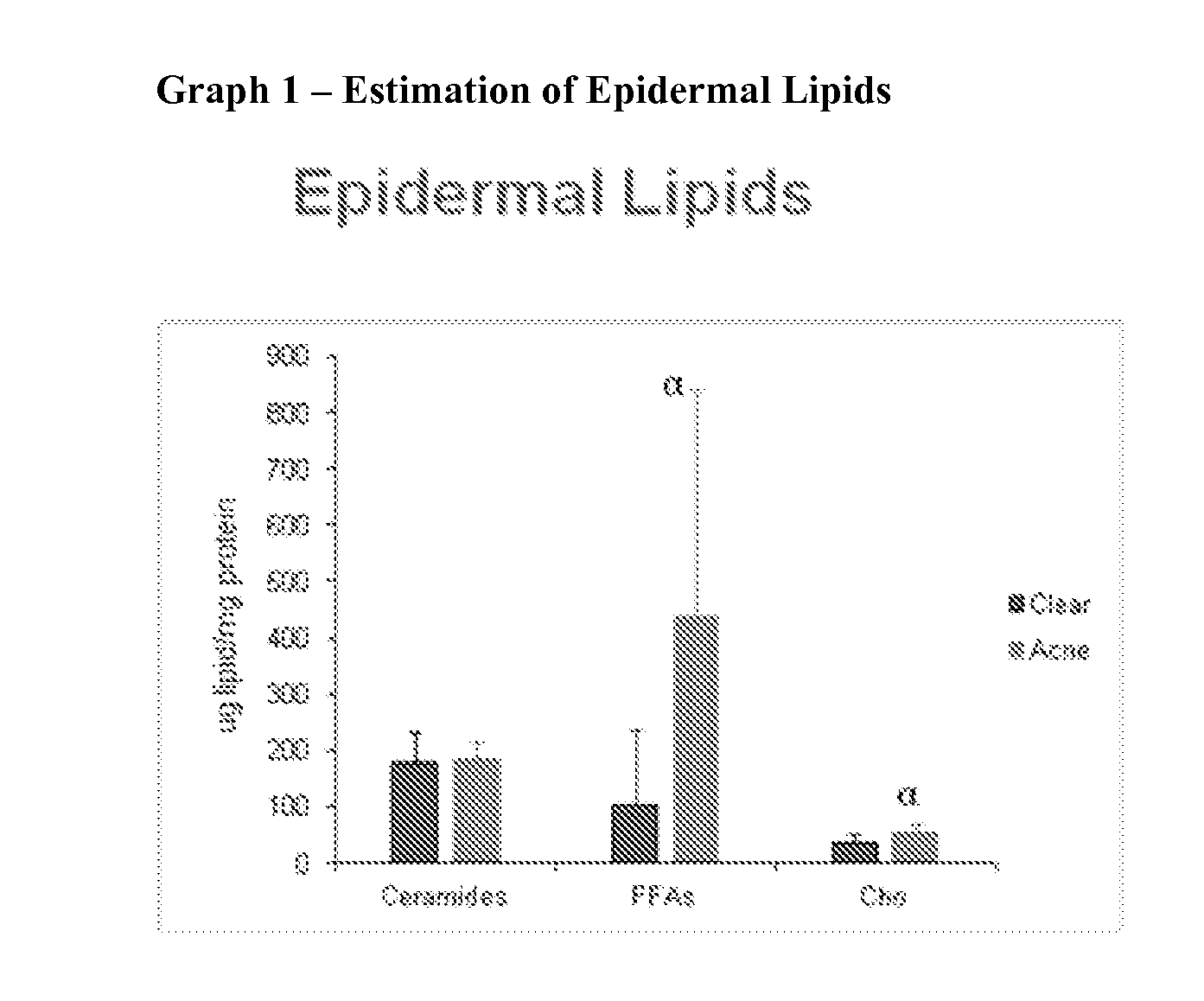Methods for treating skin barrier and reducing acne
a skin barrier and acne technology, applied in the field of acne treatment and acne prevention, can solve the problems of acne or comedones formation, not being applied in specific ways, not being commercialized as a trade herb, etc., and achieve the effects of reducing, enhancing skin barrier function, and reducing appearance and formation of acn
- Summary
- Abstract
- Description
- Claims
- Application Information
AI Technical Summary
Benefits of technology
Problems solved by technology
Method used
Image
Examples
example 1
[0131]Preparation of Malva neglecta Extract from Aerial Parts (E1)
[0132]Malva neglecta plants were wild-collected in New York. Species identification was based on gross morphological characteristics [Gleason & Cronquist, Manual of Vascular Plants; D Van Nostrand Company, N.Y.: p. 462-463]. Plants were cleaned of soil and debris and separated into aerial parts and roots. Approximately 80 g of fresh aerial plant material was homogenized in a blender with 200 mL of 80% aqueous methanol; the suspension was maintained in constant motion for 24 hours. The resulting suspension was then filtered and dried under low pressure using a rotary evaporator not exceeding 40 ° C. After filtration, the left over raw material was again extracted as described above. The combined dry mass from both extractions was designated the crude extract, approximately 2.1 g, for a yield of 6.6%. The crude extract was resuspended in 100 mL water and subjected to liquid-liquid solvent partitioning in a separatory fu...
example 2
Estimation of Epidermal and Sebum Lipids
[0133]The epidermal lipids and sebum lipids were measured using the method of Assay 4 and Assay 5 respectively in subjects with acne skin and the results are plotted in graphs 1 and 2 below. [0134]where[0135]α: p[0136]β: p
[0137]As seen from the above graphs, the Free Fatty Acid class is much higher in the acne group than the control clear skin group in the epidermal or surface lipids. The Free Fatty Acids in the sebum are also higher in acne subjects than the clear skin subjects. All sebaceous lipid classes are proportionally higher in acne subjects.
example 3
Determination of Ceramides in Human Primary Keratinocytes
[0138]Extract E1 was tested for ceramide levels using the method of Assay 1 described above. The results are given in Table 2 below.
TABLE 2Results of ceramide production in a keratinocyte cell culture modelExtractConcentration (μg / mL)Percent of controlVehicle0.1% DMSO100E125124
PUM
 Login to View More
Login to View More Abstract
Description
Claims
Application Information
 Login to View More
Login to View More - R&D
- Intellectual Property
- Life Sciences
- Materials
- Tech Scout
- Unparalleled Data Quality
- Higher Quality Content
- 60% Fewer Hallucinations
Browse by: Latest US Patents, China's latest patents, Technical Efficacy Thesaurus, Application Domain, Technology Topic, Popular Technical Reports.
© 2025 PatSnap. All rights reserved.Legal|Privacy policy|Modern Slavery Act Transparency Statement|Sitemap|About US| Contact US: help@patsnap.com



